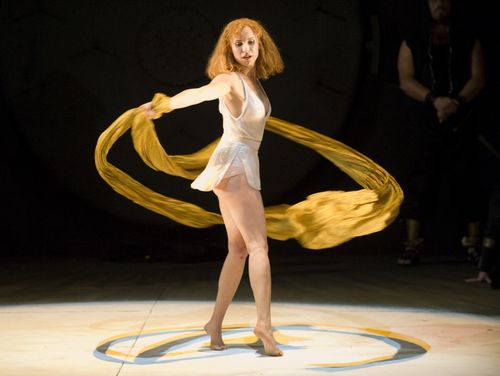 Artists are becoming very savvy about marketing themselves these days. Everyone’s out there on FaceBook and MySpace and Twitter sending out news about their work and related upcoming events to generate interest and hopefully sell tickets.
Artists are becoming very savvy about marketing themselves these days. Everyone’s out there on FaceBook and MySpace and Twitter sending out news about their work and related upcoming events to generate interest and hopefully sell tickets.
So it’s a little disconcerting to hear about artists who are not only unwilling to promote themselves but seemingly against the idea.
An exasperated arts presenter shared with me a story about a group of musicians who had done nothing to help her promote a concert she was hosting for the group at her venue. The group has no mailing list and no web presence. They didn’t put the word out at all. Consequently, there were 40 seats filled in a venue that seats 450 for their concert the other day. What’s worse is that many of the people who came to see the concert were invited guests of the artists on stage who all expected complimentary tickets.
Luckily, the group isn’t typical of the artists that the presenter brings in. But it seems as if she needs to adopt a different strategy vis-a-vis this particular set of artists and others who may be equally or somewhat reticent about pitching in on the marketing front. If I were in her position, I’d probably do the following:
1. Allow each artist only two comps.
2. Tell them that they cannot perform at the venue again until they get a mailing list together and some kind of web presence, even if it’s just a free blog on Blogger.
3. Tell them the audience needs to consist of at least 100 paying customers in order for them to see any return from the box office split.


 …is it possible to walk down the street swinging a yoga mat and be accosted by a homeless person pushing a Safeway cart in grimy clothes who says: “Pilates?” by way of introduction.
…is it possible to walk down the street swinging a yoga mat and be accosted by a homeless person pushing a Safeway cart in grimy clothes who says: “Pilates?” by way of introduction. San Francisco is probably the most sexually tolerant city in the world. There are few places where people can walk around in nothing but socks and sneakers with bells dangling from their privates without getting arrested and San Francisco is one of them. Ironically, the fact that the city is so gay-friendly makes the latest work by the luminescent British physical theatre company
San Francisco is probably the most sexually tolerant city in the world. There are few places where people can walk around in nothing but socks and sneakers with bells dangling from their privates without getting arrested and San Francisco is one of them. Ironically, the fact that the city is so gay-friendly makes the latest work by the luminescent British physical theatre company  Here’s a list of qualities that British theatre productions seem to think they need to possess in order to “succeed” in the U.S. market:
Here’s a list of qualities that British theatre productions seem to think they need to possess in order to “succeed” in the U.S. market: There’s something to be said for the fact that retreat centres try to get the people who visit them to unplug for the duration of their stay. That’s the whole point of going on a retreat — to get away from the hustle and bustle of everyday life. But following an experience I had during a recent visit to the
There’s something to be said for the fact that retreat centres try to get the people who visit them to unplug for the duration of their stay. That’s the whole point of going on a retreat — to get away from the hustle and bustle of everyday life. But following an experience I had during a recent visit to the 
 Arts organizations try many different tactics to get young people through their doors, from offering low-cost tickets and organizing party nights with DJs to doing in-schools programs and partnering with other organizations that are more closely tapped into youth culture like capoeira clubs and skateboarding stores.
Arts organizations try many different tactics to get young people through their doors, from offering low-cost tickets and organizing party nights with DJs to doing in-schools programs and partnering with other organizations that are more closely tapped into youth culture like capoeira clubs and skateboarding stores.

 Three Bay Area-based dramatists had the following to say in response to this question:
Three Bay Area-based dramatists had the following to say in response to this question: Finessing a sudden change in mood from comedy to tragedy and visa versa in the theatre is a challenging feat. I was reminded of this fact last night at a performance of Dominic Dromgoole’s
Finessing a sudden change in mood from comedy to tragedy and visa versa in the theatre is a challenging feat. I was reminded of this fact last night at a performance of Dominic Dromgoole’s  When headliner Nadja Michael (pictured) became “indisposed” last Friday for that evening’s performance of Strauss’ Salome at
When headliner Nadja Michael (pictured) became “indisposed” last Friday for that evening’s performance of Strauss’ Salome at  Andrew Taylor’s latest
Andrew Taylor’s latest